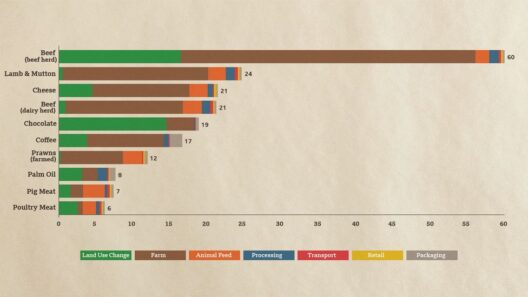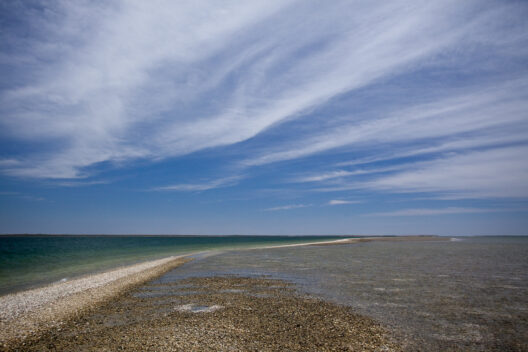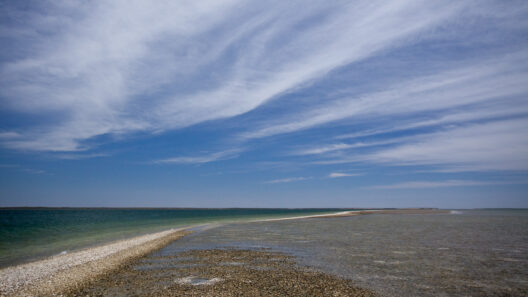Global warming is a multifaceted phenomenon that presents a conundrum, particularly when discussing its relationship with extreme weather events, such as the polar vortex. The polar vortex itself is a large area of low pressure and cold air surrounding the Earth’s poles. During winter months, this vortex can strengthen or weaken, leading to significant cold air outbreaks. Observers often link the intensity of these events to climate change, posing a critical question: Does global warming cause the polar vortex to behave differently?
To understand this relationship, it is imperative to explore the dynamics of the polar vortex and how human-induced climate changes impact atmospheric behavior. Essentially, the polar vortex comprises a persistent cyclone that encapsulates the Arctic region. When the polar vortex is strong, cold Arctic air remains contained. Conversely, a weakened polar vortex can lead to the displacement of frigid air, resulting in severe winter weather across regions, even those traditionally not accustomed to such extremes.
The fascination with the polar vortex and its apparent connection to global warming arises from its dual role as both a weather phenomenon and a climate indicator. Extreme cold spells reported in various regions seem paradoxical in the context of an overall warming globe. However, this paradox invites deeper inquiry into the atmospheric mechanics at play. As global temperatures rise due to greenhouse gas emissions, the Arctic is warming at an alarming rate. This differential warming between the North Pole and lower latitudes has profound implications for the stability and behavior of the polar vortex.
Research indicates that a warming Arctic may contribute to a destabilized polar vortex. When Arctic temperatures rise, the temperature gradient between the polar regions and the mid-latitudes weakens. This destabilization can lead to a more wobbly polar vortex, allowing cold air masses to spill southward, resulting in cold outbreaks in regions such as North America and Europe. Hence, the intricacies of how the polar vortex operates in response to global warming merit careful scrutiny.
Moreover, the effects of climate change are not uniform. The Arctic is warming nearly twice as fast as the rest of the planet, leading to significant changes in the ecosystem and atmospheric conditions. As the sea ice melts and permafrost thaws, it can precipitate feedback loops that exacerbate temperature changes. These alterations can lead to variability in the polar jet stream, which is closely linked to the polar vortex. A slower-moving, more meandering jet stream can trap cold air in certain regions, culminating in extended cold spells that contrast sharply with overall warming trends.
In essence, while global warming does not “cause” the polar vortex, it alters the very conditions under which this phenomenon operates. The previously stable configuration of the polar air masses becomes increasingly erratic, paving the way for what many observers now term ‘climate whiplash’—the rapid oscillation between extremes of heat and cold.
Furthermore, additional factors contribute to the polar vortex’s variability. Natural oscillations, such as the Arctic Oscillation and the North Atlantic Oscillation, also play key roles in influencing the intensity and position of the polar vortex. These oscillations can amplify or mitigate the effects of climate change, making it all the more challenging to attribute individual extreme winter events directly to global warming.
The cyclical nature of these patterns exemplifies the complexity of climate systems. Nevertheless, the accumulating body of evidence suggests that human impact on the climate system is making these patterns increasingly unpredictable. Instances of extreme weather, whether excessive heat waves or intense cold snaps, are becoming more frequent as the climate warms, leading to a growing realization of the interconnectedness of climate change and weather phenomena.
Public perception of the polar vortex is often shaped by its role as a dramatic illustration of winter severity. Media coverage typically highlights these events, drawing attention to the stark contrast they represent against the backdrop of climate change. Indeed, the fascination stems not only from the polar vortex’s beauty and ferocity but also from the poignant reminder it serves regarding the urgency of addressing global warming. As the polar vortex continues to exhibit unpredictable behavior, it underscores the pressing need for comprehensive climate action.
In conclusion, the relationship between global warming and the polar vortex is highly intricate. While the polar vortex is not directly caused by climate change, it is intrinsically affected by the warming climate, leading to variable behavior that can result in extreme weather. The expanding body of research highlights the necessity to reconceptualize our understanding of weather and climate as interconnected systems, where phenomena like the polar vortex are both symptoms and indicators of broader climatic shifts. Engaging with these complexities reveals the pressing need for a collective response to the escalating climate crisis—one that recognizes the interconnectedness of all climatic phenomena and their cumulative impact on the planet’s environment.






